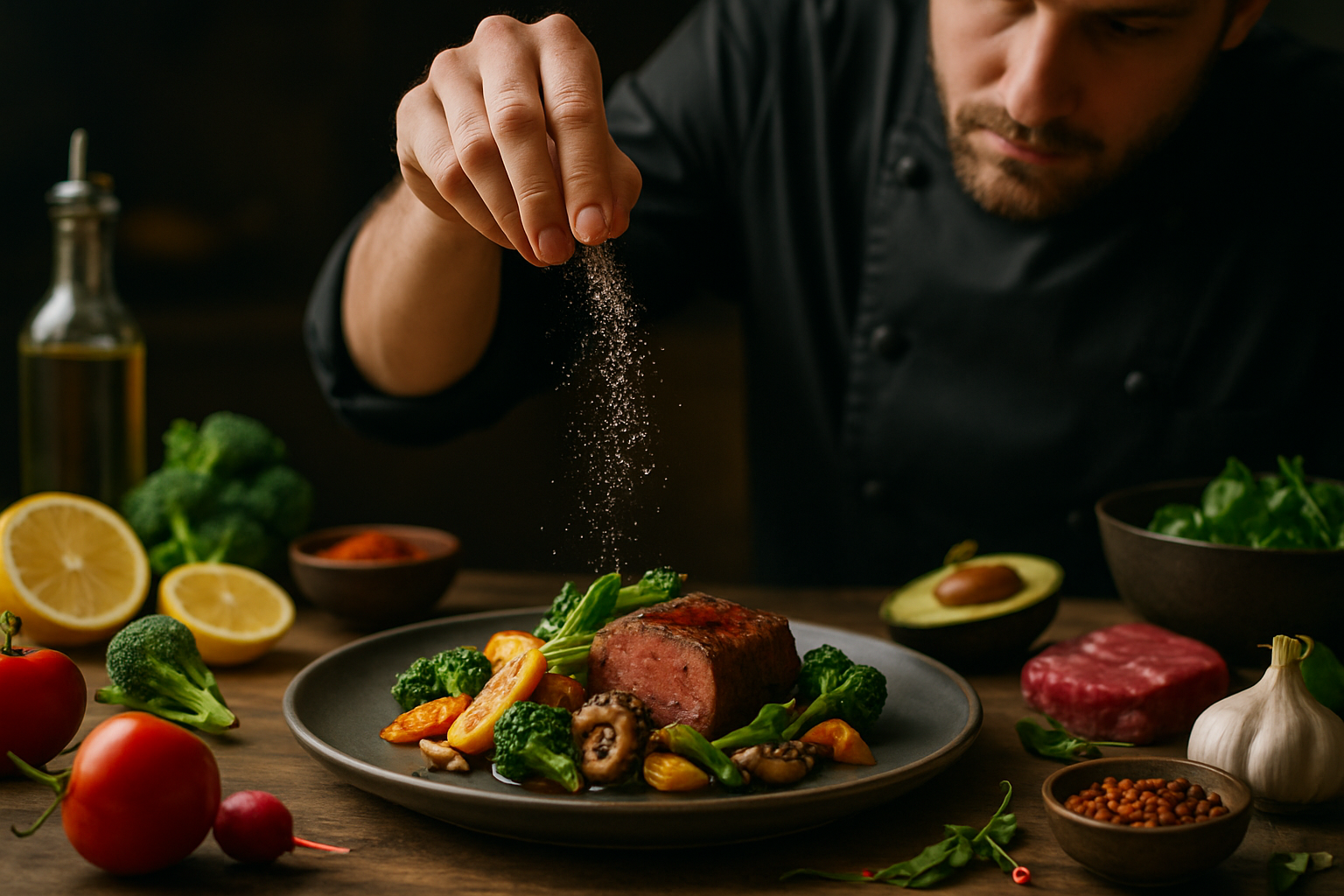Culinary Alchemy: Transforming Humble Ingredients into Gourmet Delights
Discover the art of culinary alchemy, where ordinary ingredients become extraordinary dishes. This gastronomic journey explores innovative techniques and creative pairings that elevate simple foods into restaurant-worthy meals. From transforming vegetables into decadent desserts to turning kitchen scraps into flavor-packed broths, we'll uncover the secrets of turning the mundane into the magnificent.

The Magic of Vegetable Desserts
Who says vegetables can’t satisfy your sweet tooth? Innovative chefs are revolutionizing dessert menus by incorporating unlikely vegetables into confections. Imagine indulging in a velvety chocolate cake made with beets, or savoring a creamy avocado ice cream. These vegetable-based desserts not only add a unique twist to traditional sweets but also pack a nutritional punch. Carrots lend natural sweetness and vibrant color to moist cakes, while sweet potatoes create silky-smooth pies that rival their pumpkin counterparts. Even zucchini finds its place in decadent brownies, adding moisture and a subtle earthiness. By experimenting with vegetable purees, natural sugars, and complementary spices, home cooks can create desserts that are both delicious and nutritious, proving that healthy indulgence is not an oxymoron.
Elevating Cheap Cuts: From Tough to Tender
Transforming inexpensive, tough cuts of meat into tender, flavorful dishes is a hallmark of culinary expertise. Slow-cooking methods like braising and sous vide can work wonders on budget-friendly cuts like beef chuck, pork shoulder, or chicken thighs. The key lies in breaking down connective tissues over time, allowing flavors to develop and meat to become succulent. Marinades featuring acidic ingredients like vinegar or citrus juice can also help tenderize tougher meats. For an extra flavor boost, consider dry-rubbing cuts with a blend of spices before cooking. Even traditionally discarded parts like beef cheeks or pork belly can become delicacies when prepared with care. By mastering these techniques, home cooks can create gourmet meals that rival high-end steakhouses, all while keeping their budgets intact.
From Scraps to Stock: Unleashing Hidden Flavors
One chef’s trash is another chef’s treasure, especially when it comes to making flavorful stocks and broths. Vegetable peelings, herb stems, and meat bones that might otherwise be discarded can form the base of rich, complex liquids that elevate any dish. Roasting these scraps before simmering intensifies their flavors, creating a depth that can’t be achieved with store-bought alternatives. Experimenting with different combinations of vegetable scraps can yield unique flavor profiles – try adding corn cobs for sweetness or mushroom stems for an earthy umami boost. Even fruit peels can be transformed into aromatic syrups for cocktails or desserts. By viewing kitchen scraps as valuable ingredients rather than waste, home cooks can reduce food waste while enhancing their culinary creations.
The Art of Flavor Pairing
Unexpected flavor combinations can transform familiar ingredients into exciting new dishes. Understanding the science of flavor pairing allows chefs to create harmonious blends that surprise and delight the palate. For instance, the sweetness of strawberries can be beautifully balanced by the peppery kick of basil, while the umami-rich miso paste can add depth to caramel desserts. Even seemingly incompatible ingredients like chocolate and blue cheese can create a symphony of flavors when combined thoughtfully. Experimenting with contrasting textures, temperatures, and flavor profiles can elevate simple dishes to gourmet status. By thinking outside the box and trusting their taste buds, home cooks can create unique flavor combinations that transform everyday ingredients into unforgettable culinary experiences.
Molecular Gastronomy at Home
Once confined to high-end restaurants, molecular gastronomy techniques are now accessible to home cooks, offering new ways to transform ingredients. Simple tools and ingredients can create dramatic effects: using calcium lactate and sodium alginate for spherification can turn liquids into caviar-like pearls, while agar agar can create fascinating gels and foams. Liquid nitrogen, while requiring careful handling, can instantly freeze ingredients, creating unique textures and presentations. Even without specialized equipment, home cooks can experiment with techniques like emulsification to create stable vinaigrettes or use transglutaminase (meat glue) to bind proteins in innovative ways. These techniques not only transform the texture and appearance of ingredients but also open up new possibilities for flavor combinations and presentations.
Culinary Alchemy: Tips and Tricks
• Use a coffee grinder to turn dried mushrooms into an umami-rich powder for seasoning.
• Infuse oils with herbs or spices to add complex flavors to simple dishes.
• Experiment with fermentation to transform vegetables and create unique flavors.
• Try cold-smoking ingredients like butter or cheese for a subtle smoky flavor.
• Use a blowtorch to quickly caramelize sugars on fruits or meats for added depth.
• Explore different salts (smoked, infused, or flavored) to enhance dishes.
• Incorporate edible flowers for visual appeal and subtle flavor nuances.
In conclusion, culinary alchemy is about seeing the potential in every ingredient and technique. By thinking creatively and experimenting fearlessly, home cooks can transform humble ingredients into gourmet delights. Whether it’s turning vegetables into desserts, elevating cheap cuts of meat, or creating complex flavors from kitchen scraps, the possibilities are endless. Embrace these techniques, and watch as your culinary creations evolve from ordinary to extraordinary, delighting both your palate and your imagination.





